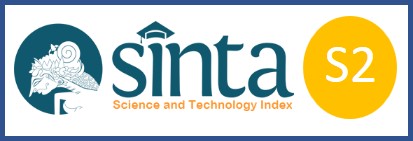Macroprudential Policy Study: Loan to Value Ratio in Home Ownership Credit Control
Downloads
Housing credit in Indonesia has high growth from 2011. This growth could become excessive growth and cause housing bubble. Therefore, the government implement Loan To Value (LTV) to control mortgages. However, growth of housing credit is still fluctuating and slowing down when the government loosening LTV policy. This condition become the reasons to evaluate the success of LTV in Indonesia. The results using Hodrick Prescott (HP) filter method identified that housing credit several times experienced excessive growth and with Generalized Linear Autoregressive Moving Average (GLARMA) method shows that housing credit to GDP ratio is influenced by previous month and not influenced by LTV policy. Based on these results, Bank Indonesia can combine LTV policy with Debt To Income policy and determine the target of mortgage growth target to succesful housing credit control.
Keywords: KPR; LTV; Excessive Growth; HP filter; GLARMA.
JEL: C01; E52
Bank Indonesia. (2011). Statistik Ekonomi dan Keuangan Desember 2011. Jakarta: Bank Indonesia.
Bank Indonesia. (2011a). Surat Edaran BI No. 13/6/DPNP. Indonesia: Bank Indonesia.
Bank Indonesia. (2012). Laporan Pengawasan Perbankan 2012. Jakarta: Bank Indonesia.
Bank Indonesia. (2012a). Statistik Ekonomi dan Keuangan Desember 2012. Jakarta: Bank Indonesia.
Bank Indonesia. (2013). Statistik Ekonomi dan Keuangan Desember 2013. Jakarta: Bank Indonesia.
Bank Indonesia. (2014). Statistik Ekonomi dan Keuangan Desember 2014. Jakarta: Bank Indonesia.
Bank Indonesia. (2015). Surat Edaran BI No 17/10/PBI/2015. Indonesia: Bank Indonesia.
Bank Indonesia. (2015). Statistik Ekonomi dan Keuangan Desember 2015. Jakarta: Bank Indonesia.
Bank Indonesia. (2016). Mengupas Kebijakan Makroprudensial. Jakarta: Departemen Kebijakan Makroprudensil Bank Indonesia.
Bank Indonesia. (2016). Statistik Ekonomi dan Keuangan Desember 2016. Jakarta: Bank Indonesia.
Bank Indonesia. (2016). www.bi.go.id.Diakses tanggal 2 November 2016.
Davis, Richard A. (2004). Observation Driven Model for Time Series of Counts. Diakses pada Januari 2017 melalui www.stat.colostate.edu/~rdavis/l ectures.
Dell Ariccia, Giovanni et al. (2012). Policies for Macrofinancial Stability : How to Deal with Credit Booms. IMF Staff Discussion Note No. SDN/12/06.
Dunsmuir, William T.M., Cuong Tran dan Don Weatherburn. (2008). Assessing the Impact of Mandatory DNA Testing of Prison Inmates in NSW on Clearance, Charge and Conviction Rates for Selected Crime Categories. Sidney: NSW Bureau of Crime Statistics and Research.
Dunsmuir, William T.M., David J. Scott. (2014). The glarma Package for Observation Driven Time Series Regression of Counts. Diakses pada 21 April 2017 melalui http://cran.r- project.org/web/packages/glarm a/vignettes/glarma.pdf.
Dunsmuir, William T.M., Cenanning Li, David J. Scott. (2014). Package Generalized Linear Autoregressive Moving Average Models. Diakses pada 21 April 2017 melalui http://cran.r- project.org.
European Systemic Risk Board. (2013). The ESRB Handbook on Operatinalising Macro-prudential Policy in the Banking Sector.
Galati, Gabriete dan Richhid Moessner. (2011). Macroprudential policy- literatur review. BIS Working Paper No 337. Switzerland : Bank International Settlements.
Gourinchas, Pierre Oliver, Rodrigo Valdes, dan Oscar Landerretche. (2001). Lending Booms : Latin America and the World. Economia, Spring, hal. 47-99.
Group of Ten. (2001). Report on Consolidation in the Financial Sector. International Monetary Fund.
Gujarati, Damodar N. (2003). Basic Econometrics (4th ed). New York: Mc. Graw Hill.
Hahm, Joon Ho, Frederic S. Mishkin, Hyun Song Shin, dan Kwanho Shin. (2012). Macroprudential Policies in Open Emerging Economies. NBER Working Paper No. 17780. Diakses pada 1 Januari 2017 melalui www.nber.org/papers/w17780.
Hardjono. (2008). Mudah Memiliki Rumah Idaman Lewat KPR. Jakarta: PT.Pusaka Grahatama. Dika Chandra Priana.
Hilbert et.al. (2016). Assessing And Managing Rapid Credit Growth And The Role Of Supervision And Prudential Policies. Journal IMF Working Paper WP/05/151.
Holt, Jeff. (2009). A Summary of the Primary Causes of the Housing Bubble and the Resulting Credit Crisis: A Non-Technical Paper. The Journal of Business Inquiry 2009, hal 120-129.
Iossifov, Plamen dan May Khamis. (2009). Credit Growth in Sub- Saharan Africa-Sources, Risks, and Policy Responses. IMF working paper
Kuttner, Kenneth dan Ilhyock Shim. (2012). Taming the Real Estate Beast: The Effects of Monetary and Macroprudential Policies on Housing Prices and Credit. Working paper Bank of Australia
Mankiw, N. Gregory. (2009). Macroeconomics 7th edition. New York : Worth Publisher
Mars. (2015). Studi Komprehensif tentang Consume Credit. Indonesia: MARS
Mendoza, Enrique G., dan Marco E. Terrones. (2008). An Anatomy of Credit Booms: Evidence from Macro Aggregates and Micro Data. Cambridge. NBER Working Paper Series. Diakses pada 5 Mei 2017 melalui http://www.nber.org/papers/w14 049.
Munier, Bertrand et. al. (1999). Bounded Rationality Modeling. Journal Marketing Letters, hal. 233-248.
Nasution, Lokot Zein. (2013). Pengaruh Loan To Value dan Shock Variabel Makroekonomi terhadap Pertumbuhan Industri Properti Indonesia. Jurnal Pembangunan Manusia Vol. 7 No. 3. Jakarta: Kementrian Keuangan Indonesia.
Oikarinen, Elias. (2009). Dynamic linkages between housing and lot prices: Empirical evidence from Helsinki. Discussion Papers 53, Aboa Centre for Economics.
Saraswati, Ida Ayu Putri. (2014). Analisis Kebijakan Bank Indonesia Tentang Loan To Value Pad Apt. Bank Tabungan Negara (Persero). Tbk Cabang Singaraja. Journal UPG vol 4 no.1 2014. Universitas Pendidikan Ganesha : Indonesia
Se, Oh Hwa. (2013). Loan-to-Value as Macro-Prudential Policy Tool: Experiences and Lessons of Asian Emerging Countries. DSF Policy Paper No. 33. Belanda: Duisenberg School of finance.
Utari Diah, A. G. Arimurti, T. Nurmalia, K. (2012). Pertumbuhan Kredit Optimal dan Kebijakan Makroprudensial untuk Pengendalian Kredit. Working paper Bank Indonesia.
Copyright (c) 2019 Azka Muthia

This work is licensed under a Creative Commons Attribution-ShareAlike 4.0 International License.
JIET (Jurnal Ilmu Ekonomi Terapan) (p-ISSN: 2541-1470; e-ISSN: 2528-1879) is licensed under a Creative Commons Attribution-ShareAlike 4.0 International License
Authors who publish with JIET (Jurnal Ilmu Ekonomi Terapan) agree to the following terms:
- The journal allows the author to hold the copyright of the article without restrictions.
- The journal allows the author(s) to retain publishing rights without restrictions
- The legal formal aspect of journal publication accessibility refers to Creative Commons Attribution ShareAlike 4.0 International License (CC BY-SA).












